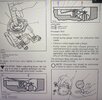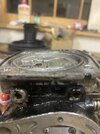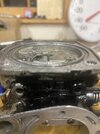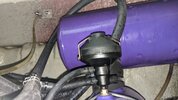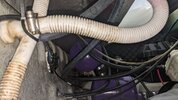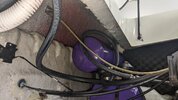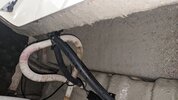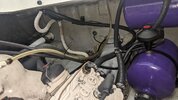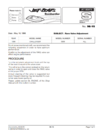mejim707
Active Member
First off, it's been a few year since I've posted, and it's been a few years since I could get the boat out due to the whoas of covid and my town shutting down docks because "you'll catch covid if you use your boat" smh... Anyway, I hope you all are doing well.
I have the 96 Challenger with the single Rotax 787 engine. This boat absolutely rips! Everything works perfect and I can start it no prob on the water and rip around the lake without any issues. The engine seems to run wonderfully!
However, when I get it back to the dock, and let it sit for about 10 - 15 minutes on the water after running for a while I cannot start it. It turns over fine, and the starter engages and spins the engine fast but it won't kick. If I only let it sit for 5 - 7 minutes it will also start up without issue. This only happens if I let it sit about 15 minutes.
If I try for a while you can hear it stutter and try to kick on but it won't. Then I pull it out of water and wait maybe 15 minutes and it starts with little effort. Doesn't start instantly, but it will start after 2 or 3 attempts.
I did this today, and when I tried to start it on water you could smell gas in the engine bay. Very distinctly.
I know others have similar starting issues and I'm wondering if perhaps this could be due to the carbs flooding? I bought a new Mikuni pop off pressure tester for 100PSI that will be here Tuesday. I'm going to pull the carbs again and using this new gauge I'm going to dial the pop off to 32 PSI.
So, could this issue be due to the pop off pressure? What would cause the carbs to flood when sitting for 15 minutes after running amazing for an hour?
This engine has zero trouble running, and zero trouble starting in our out of water when it's cold. This only happens after running it for a while.
Lastly, I do have the genuine seadoo 8 tooth starter installed.
Any help would be great. Thanks in advdance!
I have the 96 Challenger with the single Rotax 787 engine. This boat absolutely rips! Everything works perfect and I can start it no prob on the water and rip around the lake without any issues. The engine seems to run wonderfully!
However, when I get it back to the dock, and let it sit for about 10 - 15 minutes on the water after running for a while I cannot start it. It turns over fine, and the starter engages and spins the engine fast but it won't kick. If I only let it sit for 5 - 7 minutes it will also start up without issue. This only happens if I let it sit about 15 minutes.
If I try for a while you can hear it stutter and try to kick on but it won't. Then I pull it out of water and wait maybe 15 minutes and it starts with little effort. Doesn't start instantly, but it will start after 2 or 3 attempts.
I did this today, and when I tried to start it on water you could smell gas in the engine bay. Very distinctly.
I know others have similar starting issues and I'm wondering if perhaps this could be due to the carbs flooding? I bought a new Mikuni pop off pressure tester for 100PSI that will be here Tuesday. I'm going to pull the carbs again and using this new gauge I'm going to dial the pop off to 32 PSI.
So, could this issue be due to the pop off pressure? What would cause the carbs to flood when sitting for 15 minutes after running amazing for an hour?
This engine has zero trouble running, and zero trouble starting in our out of water when it's cold. This only happens after running it for a while.
Lastly, I do have the genuine seadoo 8 tooth starter installed.
Any help would be great. Thanks in advdance!




